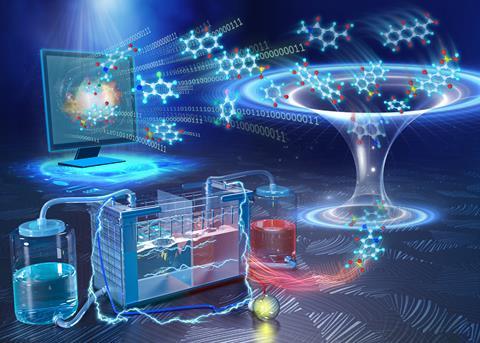DIFFER researchers used artificial intelligence to create a database of 31,618 energy storage molecules and their properties.

In recent years, chemists developed hundreds of molecules with potential for energy storage in redox flow batteries. According to researchers at DIFFER (Dutch Institute for Fundamental Energy Research), it would be convenient if these molecules and their properties could be easily searched in one database. Unfortunately, not all the properties of these molecules, such as water solubility and redox potential, are already known.
The researchers used a supercomputer to create thousands of virtual variants of molecules in two molecule families: the quinones and aza-aromatics. These molecules can easily absorb and release electrons, an important property for molecules in batteries. As input, they used basic structures of 24 quinones, 28 aza-aromatics and five different chemical side groups. The computer then constructed 31,618 different molecules.
They then used quantum chemical calculations to determine three hundred properties for each virtual molecule. In addition, they used machine learning to predict solubility in water. They compiled the results into a database called RedDB (Redox DataBase). This allows scientists both inside and outside DIFFER to easily search for molecules for energy storage in redox flow batteries. They published their research in Scientific Data.












Nog geen opmerkingen